
Above: Detail of “Tall Tree and the Big Eye,” Anish Kapoor
Guggenheim Bilbao has turned 25. While 25 years is but a small blip on my age chart, I feared it might prove too long to wait to visit architect Frank Gehry‘s monumental project. People described it as a ship, a giant flower, a fish with shimmering titanium scales. Would it simply seem dated, as much contemporary architecture does after a decade?
My answer is no! It’s a massive, awe-inspiring, sculpture – its scale rendering it overwhelming both inside and out. The deconstructive shapes seem not unlike the Pablo Picasso sculptures of women featured in a major exhibition while we were there. Or Richard Serra’s curvilinear weathered-steel sculpture, “A Matter of Time,” drawing people inside like a giant human mousetrap.
Even spectacular, large-scale artworks encounter difficulties asserting themselves inside the soaring sensuous interior. This is a building one would pay to explore even if there were no art inside.
Maybe that should not be a conflict up for debate. So often architecture is dumbed down by budget, with function superseding inspirational design.
A 1997 architectural review shortly before the opening of the museum referred to Gehry’s design as “cause for collective pride:”
If one lesson can be salvaged from the painted desert in which American architecture has been stranded in recent years, it is this: When a culture lets itself settle for anything less than great, there’s no telling how low it will sink…. Throw hats into the air. It’s a victory for all when any one of us finds a path into freedom, as Frank Gehry has….”
“The Miracle in Bilbao,” Herbert Muschamp, The New York Times, September 7, 1997



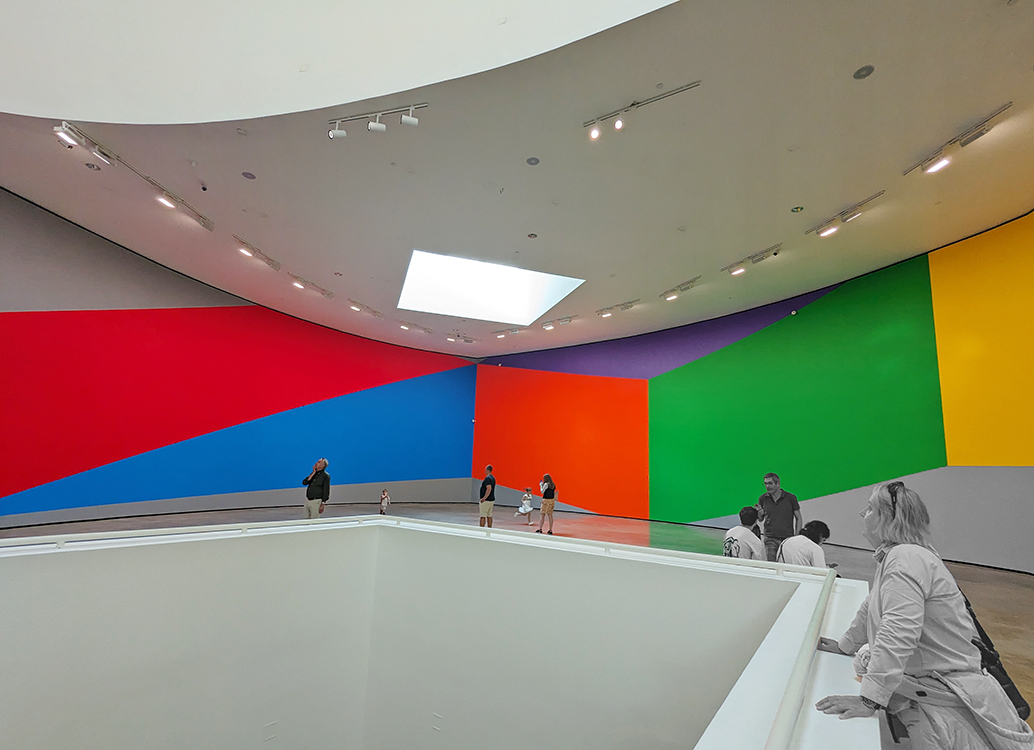




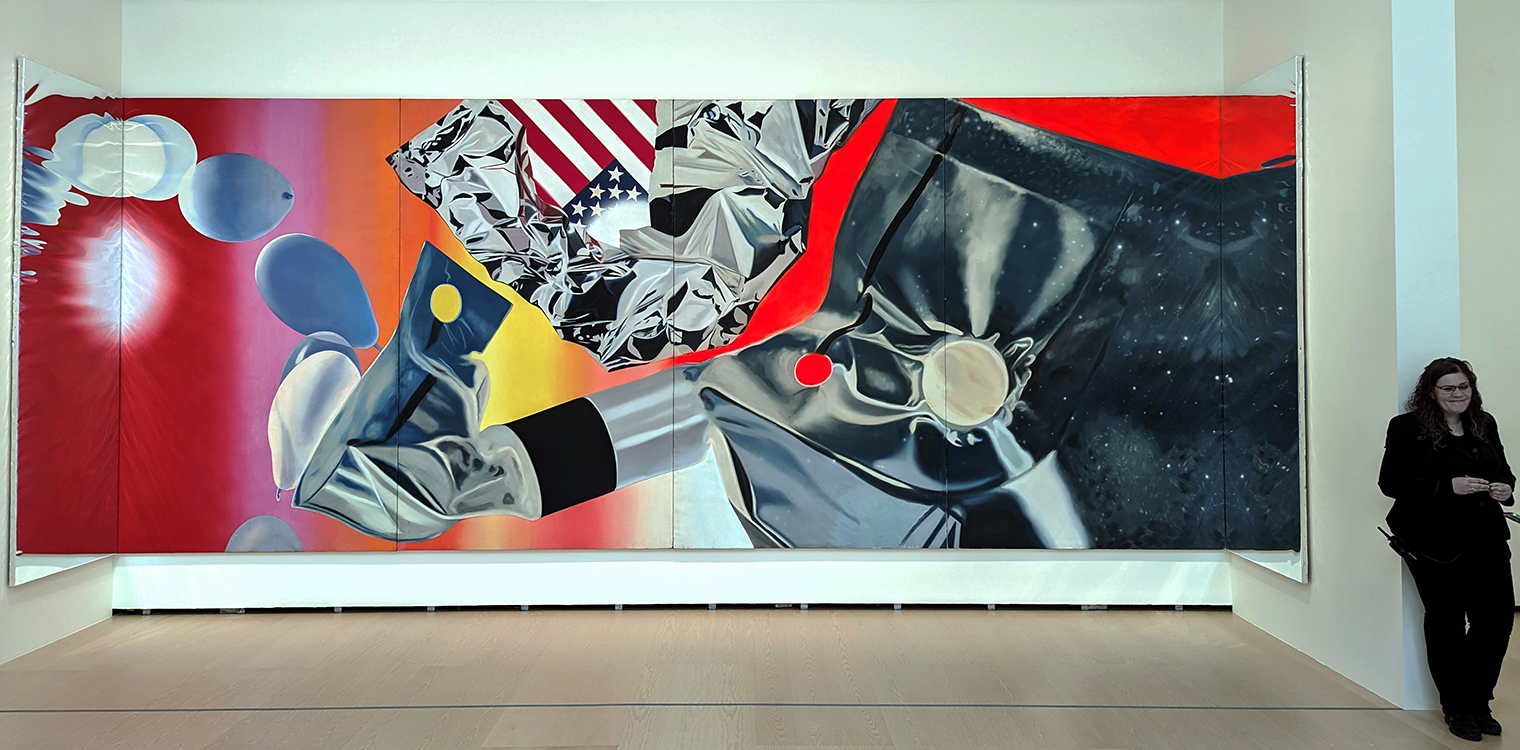

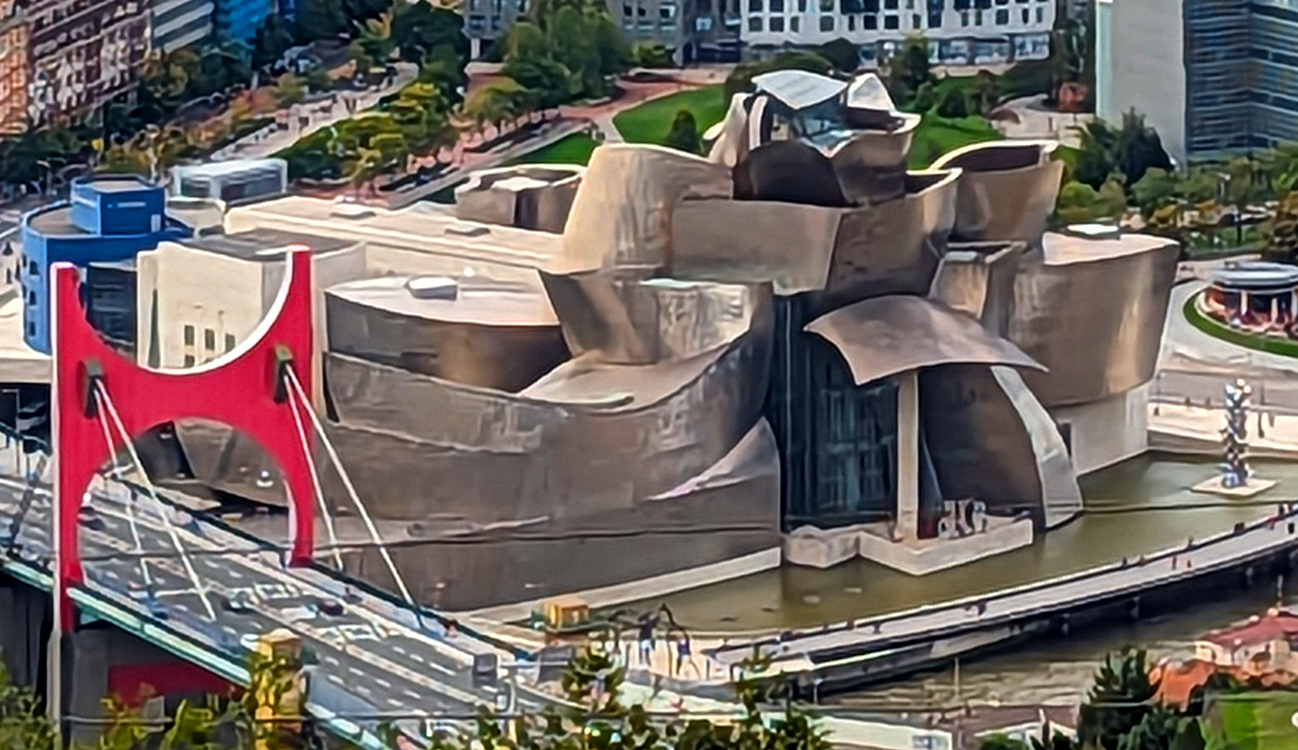



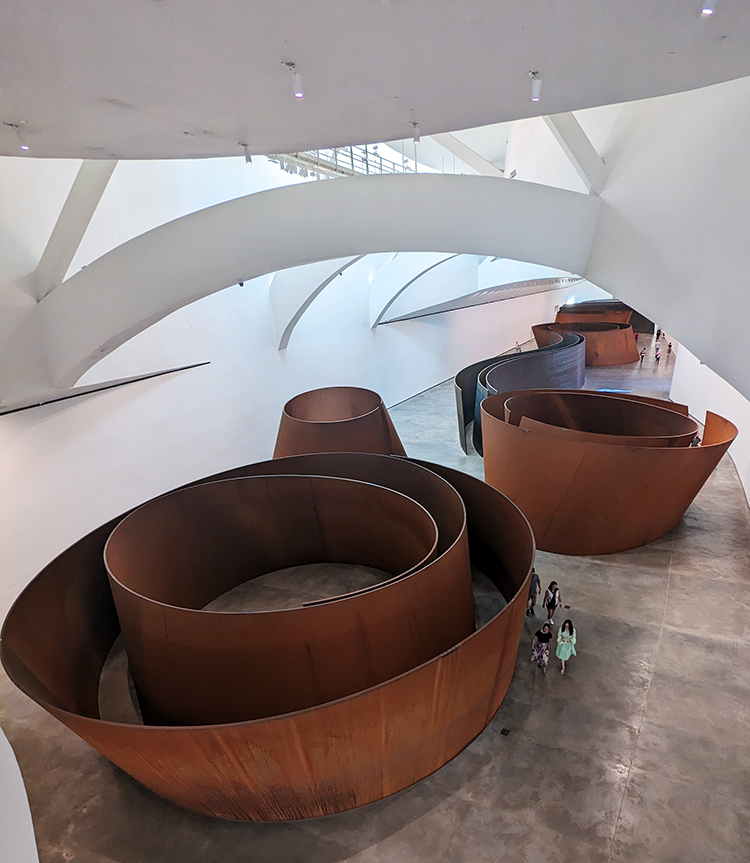



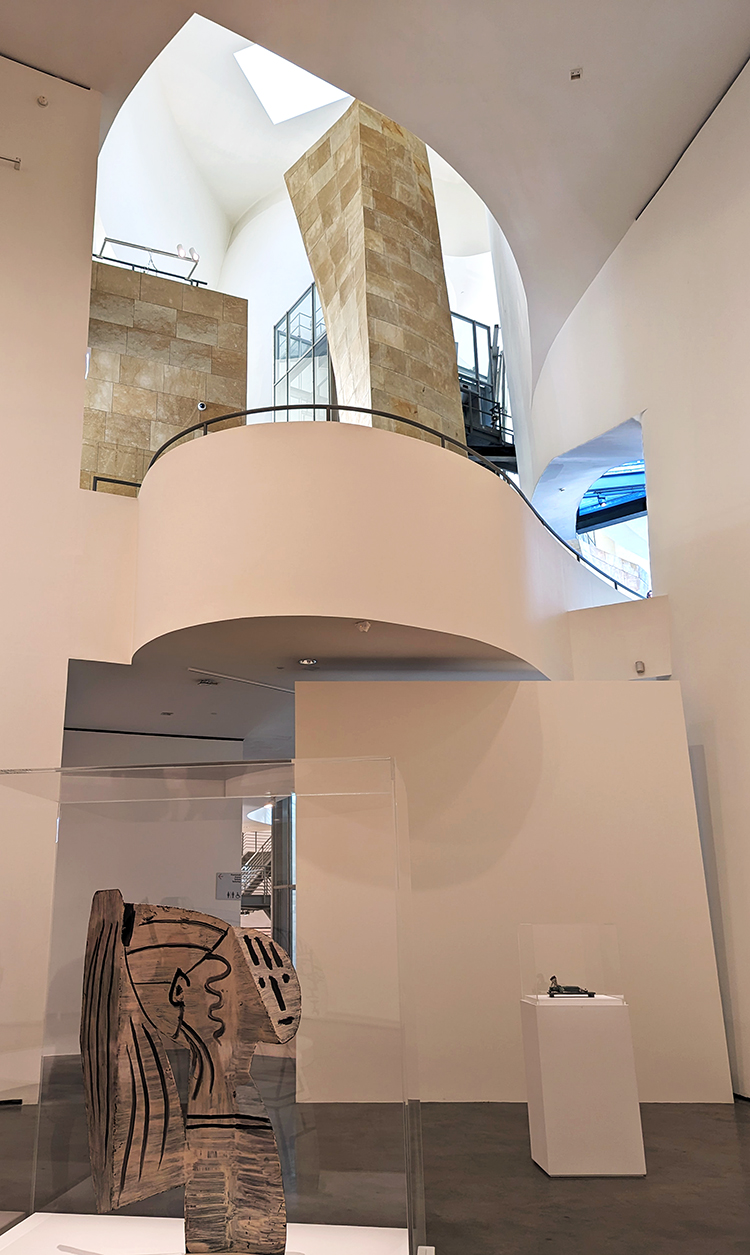



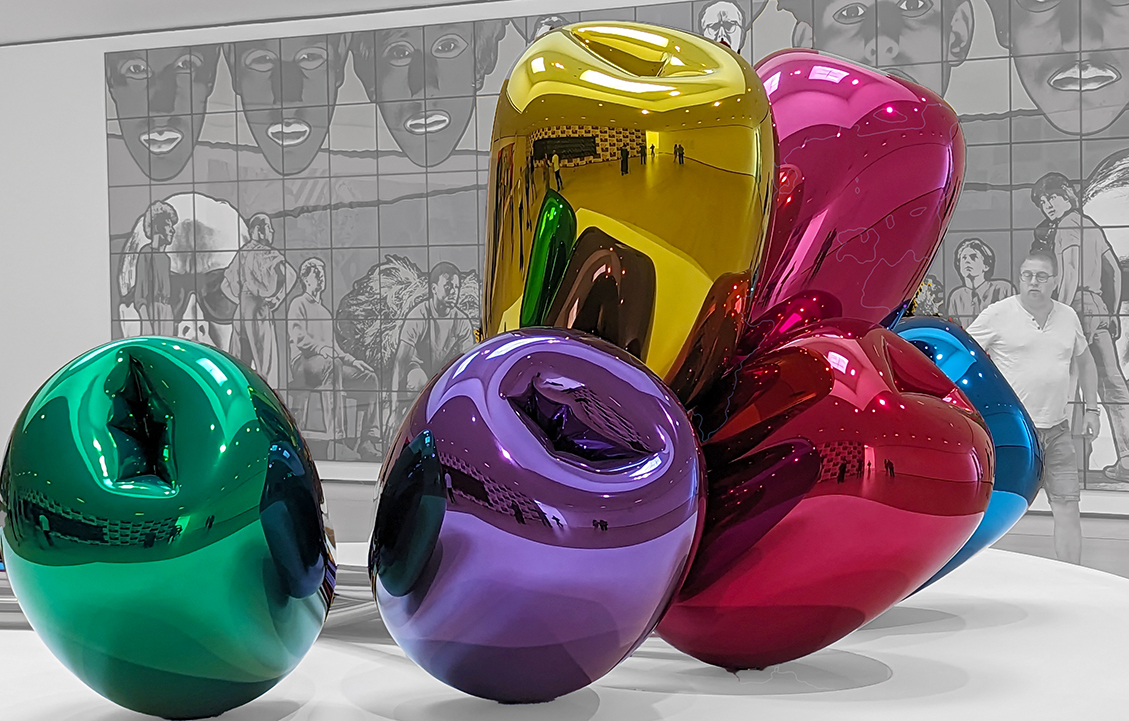










Few communities are immune from falling for promising visions of immense prosperity if only they invest in some major public project. The hail-Mary build-it-and-they-will-come approach to development. The world is littered with remnants of shattered dreams draining funds from city coffers instead of filling them.
Investment in this new Guggenheim represented a huge gamble for Bilbao. The industrial city was faced with high unemployment as steel mills and shipyards closed. But the Basques proved both proud and daring:
At first, many local taxpayers balked at the idea of their money being spent on what was called a ‘pharaonic’ project. Local artists argued that the money should go to, well, local artists; opposition politicians said the money could be better used for schools and hospitals; newspapers warned that local culture would be controlled by an ‘imperialist’ American foundation that was being paid a huge sum for the privilege. Further, this grimy city had no tradition of devotion to the arts….
The Basques agreed to cover the $100 million construction cost, to create a $50 million acquisitions fund, to pay a one-time $20 million fee to the Guggenheim and to subsidize the museum’s $12 million annual budget. In exchange, the Guggenheim would manage the institution, rotate parts of its own permanent collection through here and organize temporary shows.”
“A Gleaming New Guggenheim for Grimy Bilbao,” Alan Riding, New York Times, June 24, 1997
And the risk endangered the prestigious reputation of the Guggenheim as well, as the headline above reflects with its dismissive reference to “grimy Bilbao.” The wags of the art world snickered about the project. Why would the Guggenheim consider investing in such a backwater city? No one has ever heard of Bilbao. Even if anyone was foolish enough to decide to visit there, how in the world would they get there? Basque anarchists will probably bomb it as soon as it opens anyway.
Reflecting a decade later, Denny Lee recalled:
But the thing that struck me most, more than the dazzling architecture or cool art, was the horrible smell. Here was this magnificent museum, the most celebrated piece of architecture in a generation, and yet the river beside it was as brown as sludge and as putrid as a sewer — a world-class museum swimming in third-world biohazard….
Sure, there were other signs of design — the caterpillar-like entrances by Norman Foster for a new metro system, a sweeping footbridge by Santiago Calatrava — but they only made the city seem dingier, like a polished fork in a tray of dirty silverware…. The futuristic Guggenheim seemed to be in another city, far removed from the grubby fish markets and well-tended flower boxes that gave old Bilbao its character.”
By 2007, Lee’s opinion had evolved:
And in certain artistic and architectural social circles, a pilgrimage to Bilbao became de rigueur, with the question “Have you been to Bilbao?” a kind of cocktail party game that marked someone either as a culture vulture or a clueless rube….
The impact on this city of 354,000 was dramatic. Charmless business hotels and musty pensions were supplanted by trendy hotels like the Domine Bilbao and a Sheraton designed by the Mexican architect Ricardo Legorreta. The rusty shipyards near the Guggenheim were razed for a manicured greenbelt of playgrounds, bicycle paths and riverside cafes….
And all across the city, a who’s who of architects added their marquee names to Bilbao’s work-in-progress skyline: Álvaro Siza (university building), Cesar Pelli (40-story office tower), Santiago Calatrava (airport terminal), Zaha Hadid (master plan), Philippe Starck (wine warehouse conversion), Robert A. M. Stern (shopping mall) and Rafael Moneo (library), to name just a few. It’s as if Bilbao went on a shopping spree, commissioning a trophy case of starchitects and Pritzker Architecture Prize winners….
The city’s main artery, Gran Vía de Don Diego López de Haro, is no longer a soot-stained canyon of bank offices. In the tradition of the Champs-Élysées, the sidewalks were widened, curbside parking removed and stone buildings scrubbed….
The beautification was echoed throughout the city. Traffic circles like Plazas Campuzano and Indauxtu had been transformed into piazza-like parks, with sculptural lampposts, ergonomic benches and ultramodern landscaping….
Casco Viejo was almost unrecognizable. The graffiti had been erased. The stone facades sandblasted. At lunchtime, crowds converged on upscale pintxos bars like Sasibil, grazing on octopus and Iberian ham sandwiches, which were exhibited like jewelry under polished glass cases and halogen lights. After sundown, well-dressed couples strolled through the warren of alleyways and tunnels, now brightly illuminated by cheery shop windows and klieg-like streetlamps….
But the most striking metamorphosis wasn’t cosmetic: the Nervión River no longer stank. With the sludge-spewing factories gone and sewage treatment plants installed, the river began to heal itself.”
“Bilbao, 10 Years Later,” Denny Lee, New York Times, September 23, 2007
In Bilbao’s case, building a better mousetrap appears somewhat a miraculous investment. While the Solomon R. Guggenheim Museum in New York City reported attendance figures of 861,374 in 2023, its offspring in Bilbao drew more than 1.3 million visitors. Sixty percent of these attendees were foreigners, a huge economic boost for the hospitality industry sending affects rippling throughout the city.
People are always telling me how I changed the city,” said Gehry. “I didn’t mean to change the city, I just meant to be part of the city.”
“Frank Gehry’s Guggenheim Museum Bilbao is ‘the greatest building of our time,'”
Dezeen, Alyn Griffiths, May 18, 2022
Even by the year 2000, this Basque community was so taken by its gleaming museum that the new landmark starred on the stamp commemorating the 700th anniversary of Bilbao’s founding. A quarter of a century after its opening, the museum has indeed become a cherished, inseparable part of the city’s fabric.

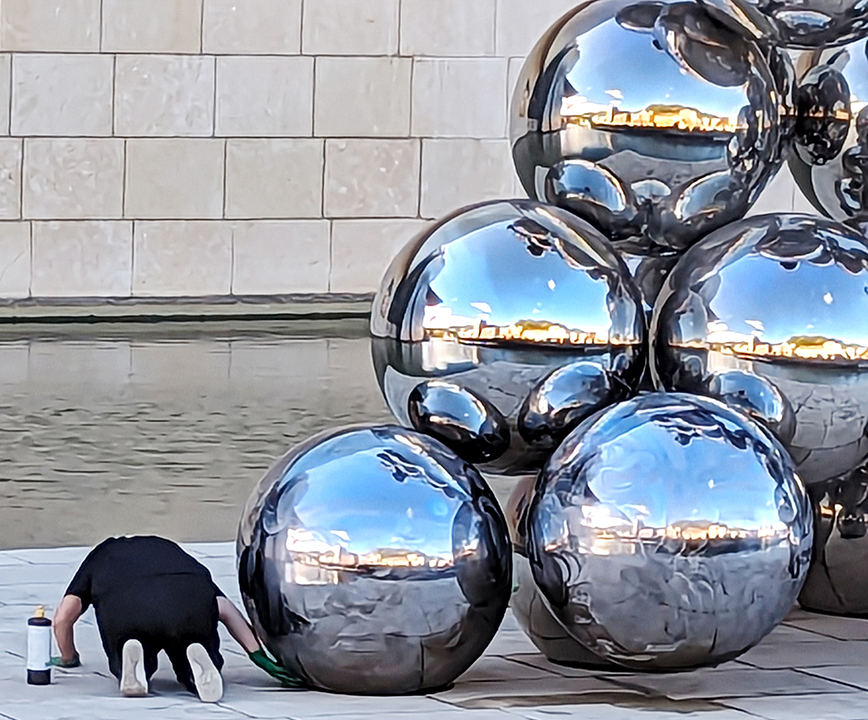
That’s a good article. Interesting, and excellent photos, as usual.
Cheers
Ric Lucas
Sent from my iPad
LikeLiked by 1 person
Thanks so much Ric!
LikeLike